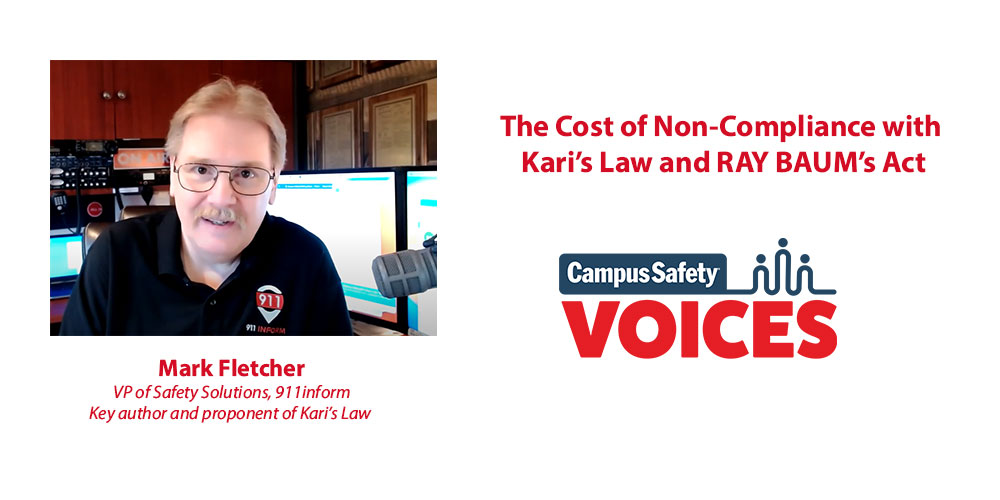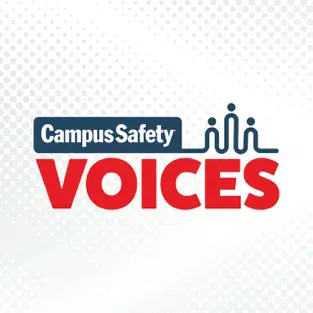On Dec. 1, 2013, 31-year-old Kari Hunt was stabbed 29 times by her husband in a Texas motel room while their three children were present. Kari’s nine-year-old daughter, Brianna, dialed 911 four times from the motel room phone but the calls never went through because the motel’s phone system required users to press “9” before dialing outside lines. Brianna fled the room with her brother and sister to seek help (00:18).
“Kari ultimately died that day and 911 was finally called some 25 minutes later,” Mark Fletcher, vice president of safety solutions at 911inform and key author and proponent of Kari’s Law, told Campus Safety. “The tragedy behind that is Kari actually lived for probably 25 to 30 minutes, according to the coroner. None of the 29 stab wounds were fatal in themselves. She basically bled to death.”
After learning of Kari’s murder, Fletcher, who has a long career in telecommunications and public safety, worked with her father, Hank Hunt, on developing Kari’s Law. The legislation, signed into federal law on Feb. 16, 2018, ensures anyone can directly reach a 911 call center without an access code and also requires a notification be sent to someone on the property alerting them of a potential incident. Either one of those would have saved Kari’s life, says Fletcher.
Six weeks after Kari’s Law was enacted, so was RAY BAUM’s Act, which was implemented by the Federal Communications Commission (FCC) and requires all enterprises with multi-line telephone services (MLTS) to fashion their phone systems so that every 911 call includes a dispatchable location and a call-back number to help dispatchers direct first responders to the scene as quickly as possible. This includes companies with one or multiple office locations, college campuses, school districts, hospitals, hotels, warehouses, retail facilities, and financial institutions. The two legislations are now codified together under US CFR 47 §9, and the penalties are enforced under general CFR Title 47 penalty rules.
For fixed telephone lines, the FCC set a compliance deadline of Jan. 6, 2021. Compliance for communications systems with non-fixed telephone systems went into effect on Jan. 6, 2022. Some experts predict fewer than 10% of organizations, including educational institutions, are in compliance despite 80% claiming they are. However, Fletcher thinks those numbers are a little “on the outside edge.” Less than 50% are compliant for general administration businesses, he predicts.
“There have been polls done across the industry. Self-reporting, 60% say they are compliant. Now that’s someone being asked, ‘Are you compliant with a law that’s federally mandated and exposing you to massive liability?’ You’re not going to get a lot of people that say they aren’t,” Fletcher said.
For schools, Fletcher estimates that number is even lower at around 20-25%. Many think they are compliant when they aren’t, or think that they don’t need to be compliant because many have older systems that they think were grandfathered in under the law.
“We had to make some concessions [when writing Kari’s Law]. We had to make the bill forward-looking, which means it didn’t apply to older systems, but I was able to get the caveat in there that it did apply to old systems if you upgraded the software release or you upgraded 51% of the hardware. That was enough of a trigger to get under the wire to where I could get systems to be considered for compliance,” Fletcher described. “[There are] older archaic key systems that don’t have to be [in compliance], but people fall into this idea that the bill is only forward-looking. It’s people reading one sentence — or worse — a quarter of a sentence, and saying, ‘Well, it doesn’t apply because of this,’ where you ignore five other paragraphs that make that a moot point.”
Schools at Risk for Non-Compliance Fines, Civil Lawsuits
Without a compliant phone system, campuses run the risk of fines of up to $10,000 and an additional $500 per day per non-compliant device (06:18).
“If you had 100 phones in your school, it’s $500 times 100 times the number of days since Jan. 6, 2022, plus 10 grand on top of that,” said Fletcher, adding that while that’s a big number, civil liabilities are even larger.
“It’s the wrongful death lawsuit which doesn’t go by any federal regulations. It goes by a jury of 12 people who don’t know anything about telephone systems, who don’t know anything about 911, who don’t know anything about technology, for the most part,” said Fletcher. “They are pretty upset that they’re sitting on jury duty instead of going to do other stuff they need to get done, and you’re trying to convince these people that you didn’t do some basic things to prevent the loss of life. You’re not going to win that battle.”
Case in point, continued Fletcher, is when the Hunt family sued the hotel.
“They sued the hotel chain on a personal liability wrongful death lawsuit with no local legislation, no county, state or federal legislation — nothing. The hotel was completely compliant, 100%, yet a Texas jury awarded the family $41 million,” he said. “Not saying it to scare — it’s a reality.”
More recently, in July 2022, six-year-old T.J. Mister drowned in a pool at a summer camp in St. Louis County. When lifeguards dialed 911 on a municipal phone, the call was routed to a default center in Colorado that specifically handles misrouted 911 calls. The phone was not provisioned correctly following an upgrade of more than 5,500 county phones, delaying local first responders from receiving the emergency call. A month later, the victim’s family filed a $40 million wrongful death civil lawsuit against the county.
“It hasn’t gone to court yet, but you’ve got a youngster who drowned, you’ve got a 911 call that didn’t go where it was supposed to and was obviously delayed. Their lawsuit has rumored to have gone to over a $100 million wrongful death lawsuit,” said Fletcher. “Why? Because there are two federal laws that cover this now, in addition to the wrongful death. So here are two incidents, one that’s been resolved and one that’s pending and getting bigger because of the issues. Again, I’m not trying to scare anybody but this is reality.”
There is good news about becoming compliant: it’s relatively inexpensive. Fletcher says there is a perception that the systems are expensive but technology has brought the cost down to make them more affordable.
“My gosh, you can go to Best Buy or any other discount store and last I saw, you can get a 50-inch flat-screen TV that’s web-enabled for a couple hundred bucks. Let’s put a dedicated one in the lobby by the front door. My system and other systems can project an image on that screen when an emergency event happens that shows, ‘When an emergency happens, you are here. You need to go here. Here’s the path to follow.’ I don’t even need to let somebody know on the property — I can put that there and that’s good 24/7,” he said. “There are ways to invest minimal amounts of money that really expand the capabilities that are there because technology has made it so much easier to do that. We’ve got technology that exists in the network layer that can pick up the oldest phone system out there. You can have just plain old telephone lines in the building and we can still capture 911 events out of the network and do the notifications because technology has advanced.”
In this interview, Fletcher also shared:
- More on the process of getting Kari’s Law and RAY BAUM’s Act through the legislature with the Hunt family (01:35)
- Three instances where Kari’s Law and RAY BAUM’s Act helped save lives (10:53)
- Who tracks whether an establishment is compliant and who within a school campus is typically involved in ensuring phone systems are compliant (13:52)
To take the necessary steps to implement the requirements of Kari’s Law and RAY BAUM’s Act, reach out to a notification and emergency management solutions provider to improve your organization’s compliance response plan. A helpful resource is RAYBAUMSAct.com, which offers several compliance tools, including a checklist of requirements and frequently asked questions. It also provides further details on devices and coverage.
Watch the full interview here or listen on the go on Apple or Spotify.









